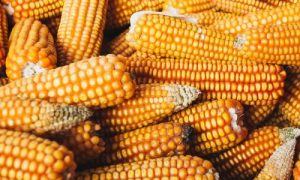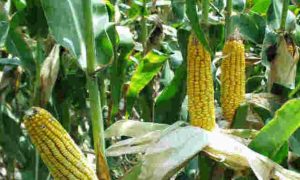Kenya: Slow importation of duty-free maize sinks hopes of lower flour prices

Two months to the end of the gazetted period to import cheap maize, it has surfaced that traders have only been able to import 48,000tn against the expected 500,000tn.
After his inauguration in September, President William Ruto removed the maize subsidy, saying it was a political tool.
In December, the National Treasury gave traders a window from March 2023 to August 2023 to import maize, a move the government said was meant to alleviate the current high flour prices and deal with the high cost of living.
“Import Duty Waiver has been granted for registered millers and traders to import a total of 500,000 metric tonnes of white maize grain from 17 March 2023 to 6 August 2023,” the gazette notice said.
Deputy President Rigathi Gachagua admits that Kenya is facing challenges of importing maize due to its unavailability of the cheap staple and stiff competition from Angola and Rwanda, which are also looking for the same grain.
By mid-April, Gachagua had received a ship carrying 48,000tn of maize imported from South Africa and Ukraine, which arrived in the port city of Mombasa. The idea being was that the arrival of the maize flour would see prices drastically come down.
“The only available maize is from South Africa. There is no maize almost everywhere in the world,” he told Kenyan media during an interview a few days after receiving the maize consignment.
With the scarcity of maize, Gachagua says the government has put in measures to reduce the flour price to KSh159 ($1.16) for a 2kg packet.
“The economy has started showing good signs of recovery. We will bring down the prices to KSh130 and KSh120,” he said.
Despite such assurance, the price for much of the maize meal flour remains high, retailing between KSh190 to KSh230 per 2kg in the majority of stores across the country.
John Odhiambo, a bodaboda (motorcycle) rider in Kasarani, north of Nairobi, tells The Africa Report that he does not trust the government’s promises. His hope lies with farmers to harvest enough maize between August and September to help lower the prices.
“We are still suffering to get cheap flour. I hope the ongoing rains will enable our farmers to get enough maize,” he says.
The government should clearly explain to the public the challenge with the importation of maize, says Johnson Denge, an economic analyst.
The government wants the millers to sell 90kg of maize at KSh4,200, but the millers want it sold between KSh5,500 and KSh5,600 so they can make a profit.
Denge adds that apart from traditional countries like Tanzania, Zambia, and Uganda – who have been selling maize to Kenya for years and are also experiencing a shortage – the conflict between the government and the millers on the selling price of the maize once it arrives in Kenya remains unresolved.
“[The] government should solve this dispute and also pay millers who had imported maize during the last regime,” Denge tells The Africa Report.
In March, the Cereal Millers Association led by its chairman, Mohammed Islam, appeared before an Agricultural Parliamentary Committee.
The association disclosed that the government owes millers KSh2.589bn after the previous administration, under President Uhuru Kenyatta, entered into a four-week contract with them to subsidise flour prices.

















